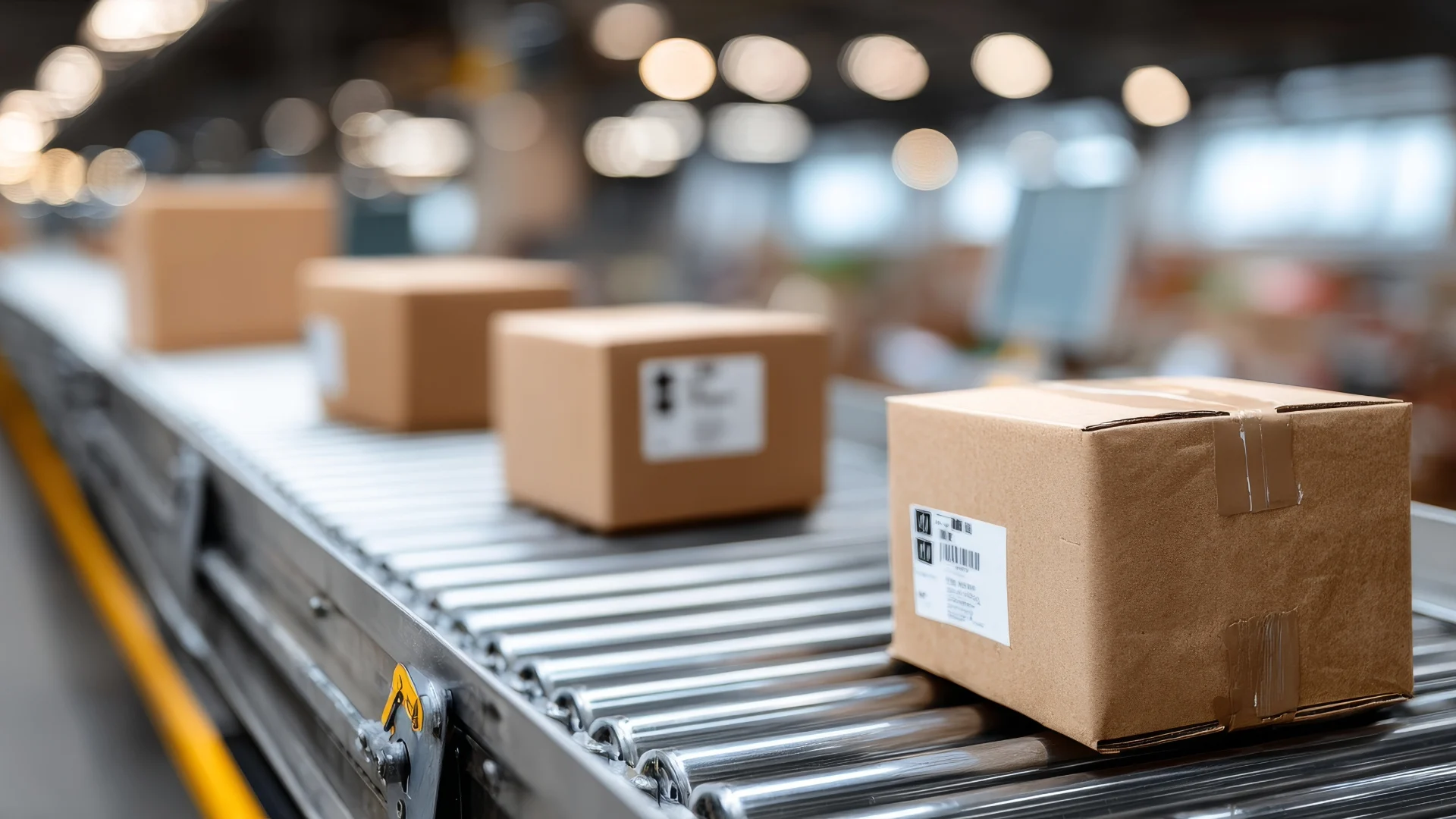Your supply chain is the lifeline of your business, but it’s also a complex network that can be disrupted in countless ways. Weak points in this network, whether inside your own operations or in the wider market, are what we call supply chain vulnerabilities.
From late shipments to cyber threats, even a small crack in the chain can create far-reaching consequences. In this guide, we’ll look at the common types of supply chain risks and vulnerabilities, how they affect your operations, and the steps you can take to assess and reduce them.
What we’ll cover
Fleets, bookings, subcontractors, compliance & payments.
With HX, you can manage them all in one place.
Why understanding supply chain vulnerability matters
Every stage of your supply chain depends on the smooth handover of goods, data, and resources. When one link fails, the knock-on effect can disrupt schedules, inflate costs, and damage customer relationships.
In sectors like haulage and logistics, supply chain vulnerabilities can emerge quickly due to tight delivery windows and changing customer demands. Knowing where these supply chain risks are likely to occur helps you prepare for them before they impact your service levels.
Types of supply chain vulnerabilities
Not all supply chain vulnerabilities look the same; some originate inside your business, while others are caused by external forces you can’t control. Grouping them into these two categories makes it easier to spot patterns and plan your response.
Internal weaknesses in processes and operations
These supply chain vulnerabilities stem from within your own organisation, often hidden in day-to-day routines. They usually show up in predictable areas, which means you can address them once you know what to look for, starting with the most common internal vulnerabilities below.
1. Poor inventory and forecasting controls
Without accurate tracking, stock levels can swing from costly overstocking to damaging shortages. This creates waste, ties up capital, and limits your ability to respond quickly to market changes.
Weak forecasting makes it harder to plan for seasonal peaks or sudden drops in demand. The result is often late deliveries, missed opportunities, and customers seeking more reliable suppliers.
2. Lack of transparency and single-supplier reliance
When visibility across your supply network is limited, you cannot see problems until they have already disrupted operations. Missing data on stock movements, lead times, or supplier performance makes it harder to react effectively.
Relying heavily on one supplier adds another layer of supply chain risk. If that supplier experiences delays, price increases, or quality issues, your business may have no quick alternative to keep orders moving.
3. Outdated processes and technology risks
Relying on manual systems or old software slows down decision-making and increases the chance of mistakes. These inefficiencies can compound during busy periods, creating bottlenecks that disrupt schedules.
Outdated technology is also more vulnerable to breakdowns and security breaches. Upgrading to modern tools improves speed, accuracy, and resilience across the supply chain.
4. Human error and compliance gaps
Mistakes in handling goods, processing paperwork, or communicating with partners can trigger delays and extra costs. These errors often stem from unclear procedures or a lack of regular training.
Compliance failures, such as not meeting safety or documentation standards, can lead to fines or legal action. Carrying out regular driver risk assessments and refresher training helps reduce the chance of avoidable incidents.
External risks from environment and market
These supply chain vulnerabilities arise from forces outside your direct control, affecting the wider supply chain. They can appear suddenly and often require contingency plans to keep goods moving when conditions change.
1. Economic and geopolitical disruptions
Shifts in exchange rates, trade policies, or political stability can quickly alter the cost and availability of goods. These changes may also create delays at borders or reduce access to major markets.
Geopolitical tensions, sanctions, and regional conflicts can disrupt established routes and supplier relationships. If your business monitors these trends closely, you’ll be better placed to adapt your sourcing and transport plans.
2. Logistics bottlenecks and transport failure
Congested ports, road closures, and breakdowns in transport infrastructure can halt deliveries and cause cascading delays. These issues can be even more disruptive when moving high-risk freight in road haulage that requires specialist handling and strict timeframes.
Unexpected failures in vehicles, equipment, or scheduling systems can quickly derail your delivery commitments. Building flexibility into your transport plans helps you recover faster when the unexpected happens.
3. Environmental events and global health crises
Severe weather, natural disasters, and climate-related disruptions can stop goods from moving and damage infrastructure. Floods, storms, and extreme temperatures often force route changes or temporary shutdowns.
Global health crises, such as pandemics, can close borders, reduce workforce availability, and cause sudden spikes in demand for certain products. Planning for these scenarios helps your business stay operational when external conditions shift very quickly.
4. Cybersecurity threats and third-party breaches
As supply chains become more connected through digital platforms, the risk of cyberattacks increases. Criminals can target your systems directly or exploit weaknesses in a partner’s network to gain access.
Data breaches, ransomware, and system outages can interrupt operations and damage trust with customers. Strengthening your cybersecurity measures and monitoring third-party compliance reduces the risk of these disruptions.
The impact of vulnerabilities on business operations
When a weakness in your supply chain is exposed, the effects can spread quickly across your entire operation.
These are some of the most common ways supply chain vulnerabilities can affect your business:
- Financial losses and cost escalation: Disruptions can lead to sudden increases in transport, storage, and labour costs. You may face penalties for missed deadlines, while repeated problems can drive up insurance premiums and erode profit margins.
- Operational delays and reputational damage: Late or incomplete deliveries can leave customers frustrated and unwilling to place future orders. Over time, this can weaken your position in the market and make it harder to win new contracts.
- Safety concerns and loss of market position: Accidents or compliance breaches can harm your workforce and lead to legal action. Persistent service failures give competitors an opportunity to step in and take your share of the market.
How to assess your supply chain risks
A supply chain vulnerability assessment gives you a clear view of where weaknesses exist in your supply chain.
Here’s how to do it in two simple steps:
1. Define scope and map your supply network
Start by outlining every stage of your supply chain, from sourcing raw materials to delivering the finished product. This mapping exercise shows how each part connects, making it easier to spot potential weak spots.
Include all suppliers, transport partners, and storage facilities in your map. The more detailed your view, the better your chances of identifying where disruptions are most likely to occur.
2. Identifying critical weak points using data
Collect performance records, delivery times, and incident reports from across your supply chain. Analysing this data highlights recurring issues and helps you understand their root causes.
Look for patterns, such as repeated delays from a certain route or high defect rates from a specific supplier. These insights allow you to prioritise improvements in the areas that will have the biggest impact.
Resilience strategies and mitigation tactics
Once you know where your supply chain vulnerabilities are, the next step is to reduce their impact and prevent them from reappearing. These strategies help you keep goods moving even when the unexpected happens.
Diversify suppliers and logistics channels
Relying on a single route or supplier increases the risk of disruption if something goes wrong. Working with multiple partners, such as reputable freight forwarders, gives you more flexibility when you need to change course.
Build relationships with suppliers in different regions and keep alternative transport options ready. This diversity helps you react faster when one part of the chain is under pressure.
Create inventory buffers and flexible systems
Keeping extra stock of critical items gives you breathing room during delays. This buffer can keep production running while you resolve the disruption.
Flexible systems, such as dynamic scheduling tools, help you adjust delivery plans quickly. The ability to pivot without starting from scratch is all-important to maintaining customer trust.
Strengthen cybersecurity and continuous monitoring
With more operations moving online, protecting your systems from cyber threats is paramount. Use secure platforms, multi-factor authentication, and regular security updates to keep data safe.
Continuous monitoring tools can flag unusual activity before it turns into a major breach. Quick action here reduces downtime and keeps operations running smoothly.
Educate staff and enforce best practice training
Your team plays a central role in keeping the supply chain resilient. Regular training makes sure they know how to handle unexpected situations and follow correct procedures.
This training should cover compliance, safety, and communication protocols. A well-prepared team can make the difference between a short delay and a major operational breakdown.
Real-world case studies and supply chain crises
Seeing how other companies have dealt with supply chain disruption can give you practical ideas for strengthening your own supply chain.
Below are examples of high-profile crises and the lessons they offer.
| Case Study | What Happened? |
| Toyota 2011 Earthquake Impact | The earthquake and tsunami in Japan halted production at multiple plants due to damage to local suppliers. Toyota responded by building more diversified supplier networks and increasing parts inventory for critical components. |
| Maersk Cyberattack 2017 | A ransomware attack shut down Maersk’s operations worldwide for several days. The company rebuilt its IT systems and implemented stronger cybersecurity protocols. |
| Ever Given Suez Canal Blockage 2021 | The grounding of a container ship blocked one of the world’s busiest shipping lanes for six days. The incident highlighted the importance of route diversification and contingency planning. |
Frequently asked questions
What is meant by supply chain risk?
Supply chain risk refers to the chance that an event or condition will disrupt the normal flow of goods, services, or information within your supply chain. This can include anything from transport delays to cyberattacks, depending on your industry and operations.
What are the vulnerabilities in the global supply chain?
Vulnerabilities in the global supply chain range from geopolitical instability and natural disasters to reliance on limited suppliers and complex transport routes. These weaknesses can be amplified when goods across multiple borders and rely on several partners.
What are the 7 different types of supply chain risks?
The seven common types of supply chain risks are financial, operational, strategic, compliance, environmental, technological, and reputational. Each type requires different strategies to identify, monitor, and reduce the potential impact.




